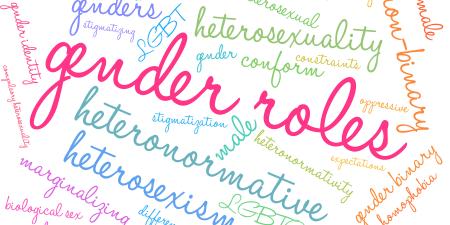Discussing sex, even in the medical context, isn’t merely a matter of facts. As Lenore Tiefer wryly comments in her piece for this month’s issue of Virtual Mentor, “patients’ ‘is it normal?’ questions are…more or less transparent requests for moral authority.” But is medicine equipped or entitled to occupy this place of moral authority? The November issue of Virtual Mentor takes up this and related questions about sexual health.
Edward Shorter discusses the American Psychiatric Association’s Diagnostic and Statistical Manual of Mental Disorders, arguing that its pathologizing of atypical sexual interests, which it has historically conflated with criminal sexual behavior, is inappropriate and should be discarded. Indeed, the DSM’s slowness to change its stance on homosexuality discredited its sexuality-related diagnoses. As Richard Weinmeyer’s piece on sodomy laws explains, sodomy began to be decriminalized in the US in the 1960s. But it wasn’t until 1973, Shorter tells us, that the DSM removed homosexuality from its list of diagnoses.
Virtual Mentor special contributor Adam Sonfield explicates further how the law—in this case the US Supreme Court decision in the Burwell v. Hobby Lobby case—can influence shared decision making between physicians and patients around available and affordable birth control options for women.
Turning from medical codes and legal decisions to public advocacy, the winning and runner-up entries in the 2013 Conley Ethics Essay Contest, written by Abigail Cline and P. Justin Rossi, respectively, opine that the profession of medicine must tread carefully around the issue of sex education in schools: while some abstinence-only programs promulgate misinformation, which it is physicians’ duty to rectify, the profession does not have the authority to decide which norms and mores public programs should convey.
Even when medicine is not navigating the gray zone between scientific and moral authority, it influences sexual behaviors and norms through other channels, such as medical innovations. Arthur Caplan argues that, in addition to improving untold numbers of sexual relationships, the introduction of Viagra helped to dispel stigma and silence surrounding certain forms of erectile dysfunction, which he contends is a significant social good. Jill Blumenthal and Richard H. Haubrich raise the question of whether widespread availability of the new antiretroviral pre-exposure prophylaxis (PrEP) for HIV will lead to riskier sexual behavior.
Overall, discussing sex-related matters with patients is, by many accounts, an underdeveloped skill for most physicians. This month’s case commentaries give practical guidance for discussing sensitive topics with patients and their families. Charles Moser discusses techniques for interviewing patients who may be experiencing intimate partner violence. Mary A. Ott advises the reader on how to counsel teens engaged in risky sexual behavior. Philip Zachariah, Gregory S. Blaschke, and Melissa Weddle discuss gentle attempts to dissuade a patient’s parents from putting him through potentially damaging “conversion therapy” to attempt to change his sexual orientation.
Someone who stands as an exception to the judgment that physicians have “underdeveloped skill” in communicating about sex is “Dr. Drew” Pinsky, who has been educating the public about love, sex, and relationships in his radio program Loveline for more than 25 years. Virtual Mentor interviewed Dr. Pinsky for this month’s podcast.
Lastly, two articles discuss how to train physicians to be able to handle these delicate topics. Lenore Tiefer discusses the importance of medical students’ developing self-awareness and exploring their own values as preparation for counseling patients on these matters. Eli Coleman underscores these ideas in his discussion of the Program in Human Sexuality at the University of Minnesota.
As Coleman states in his article about the Minnesota curriculum, “There is a crisis in medical school education about sexual health in the US.” He explains that the desire for more training in lesbian, gay, bisexual, and transgender (LGBT) issues is sparking some interest in sex education in general. We hope the need for better physician training that is underscored in this issue of VM provides another boost in the right direction for comprehensive sex education across the educational continuum.



